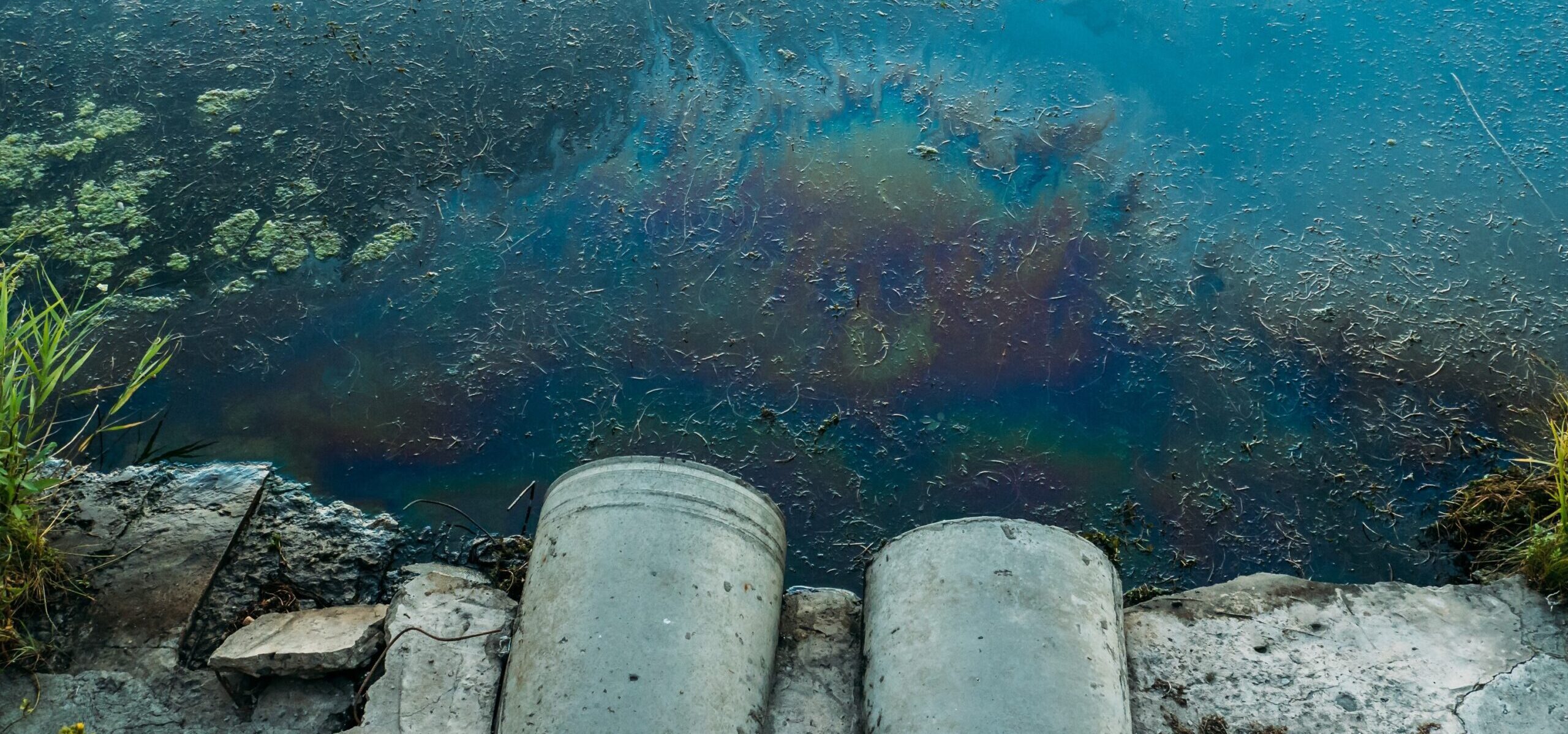Impacts to water quality are sometimes easy to see with the naked eye: floating trash or debris, a bright green algal bloom, or a shimmery oil slick. Other sources are more subtle, originating from something that is all around us yet often unnoticed: the air.
Believe it or not, air pollution has a profound impact on water quality, and the journey of pollutants from the air to water bodies illustrates the complex environmental interconnection between the two.
Precipitation, such as rain or snow, and even dust particles, can carry sulfuric and nitric acids that have formed in the atmosphere when sulfur dioxide and nitrogen oxides are released by burning fossil fuels. This causes the acidification of rain (i.e., acid rain), which can significantly lower the pH levels of lakes, rivers, and streams. The acidic conditions create an environment that is inhospitable to many forms of aquatic life, disrupting the delicate balance of these ecosystems.
In a similar process, nitrogen compounds from air pollution can be deposited into waterbodies. These compounds act as fertilizer, causing excessive growth of algae and aquatic plants. This process is called eutrophication, and it can actually deplete the oxygen in the water. As algae die and decompose, they consume the oxygen, making it difficult for aquatic life to survive. Eventually, this results in the formation of a hypoxic area, or dead zone. Examples of dead zones can be found around the world, such as in the Gulf of Mexico, the Chesapeake Bay, and the Black Sea.
Heavy metals present in the atmosphere present another threat to water quality. Metals such as mercury, cadmium, and lead can travel long distances through the air before settling into waterbodies. Once in the water, they can accumulate in sediments and find their way into the food chain, ultimately posing health risks to both wildlife and humans who rely on these water sources for drinking or fishing.
The air can also carry organic pollutants such as dioxins and polychlorinated biphenyls (PCBs), as well as fine particulate matter from vehicle exhaust and industrial emissions, which are ultimately deposited into water sources. Many of these toxic chemicals are persistent, meaning they do not break down easily, leading to long-term contamination that can affect the health of aquatic organisms and, by extension, the entire ecosystem. Furthermore, fine particulates increase the suspended particles in the water, which makes it difficult for light to penetrate. This impedes the critical process of photosynthesis that aquatic plants need to survive.
Addressing air pollution is crucial not only for the sake of the air we breathe but also for the water we drink and the ecosystems we depend on. As surface water sources ultimately become tap water, it’s important to note that our municipal drinking water utilities are on the front lines of protecting public health by monitoring and testing water quality for a long list of substances, both regulated and unregulated (especially if there is a known local threat). These include parameters that are impacted or exacerbated by air pollution, such as heavy metals; pH levels; nitrates and nitrites; PCBs and dioxins; volatile organic compounds (VOC); and turbidity.

